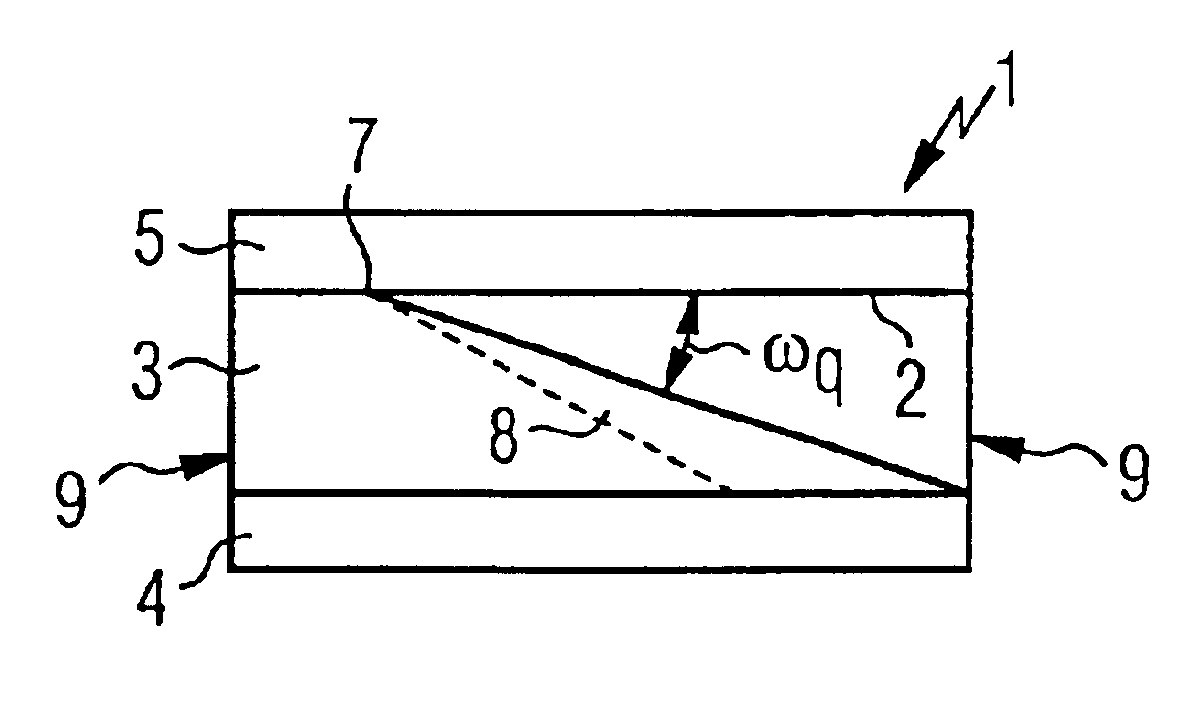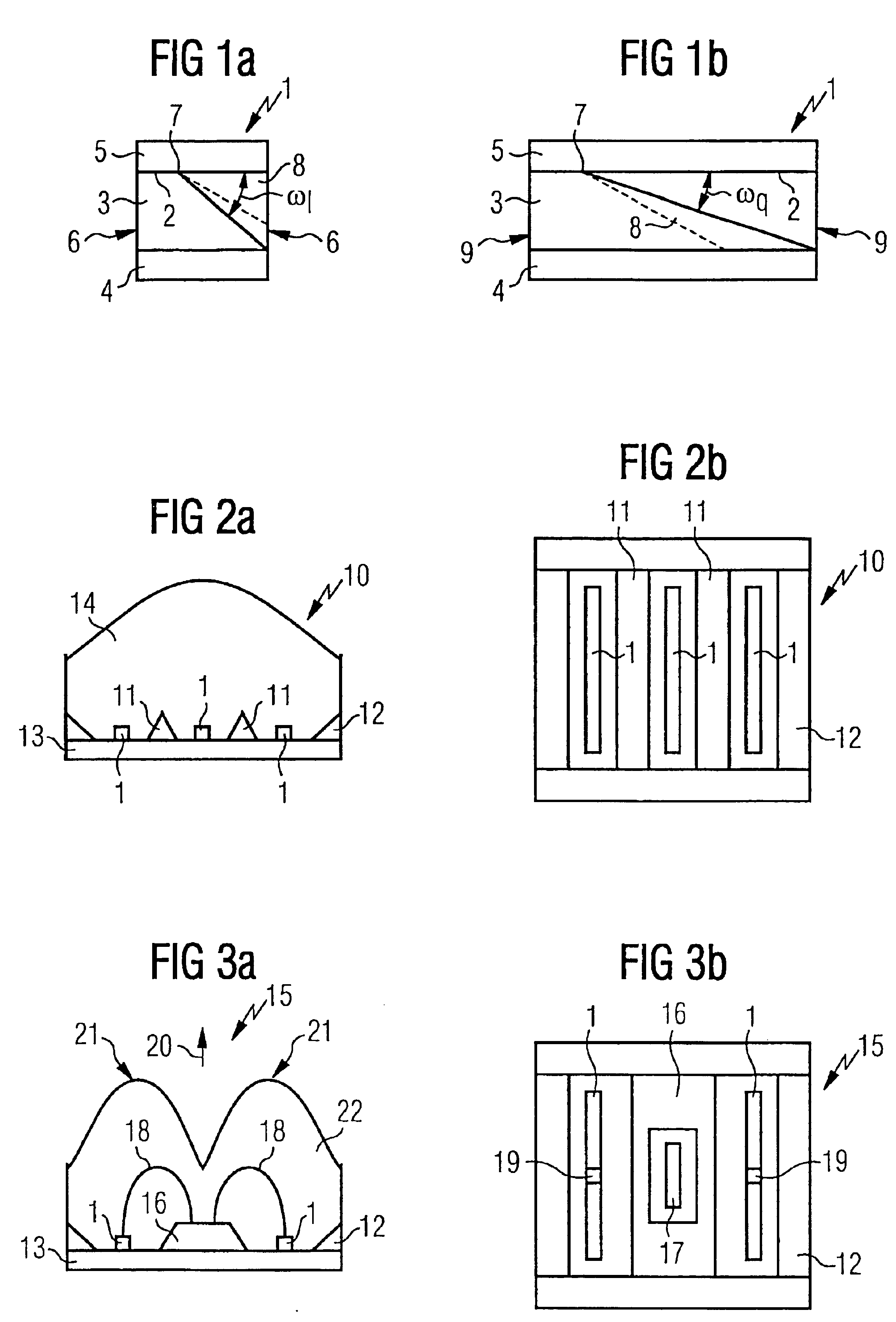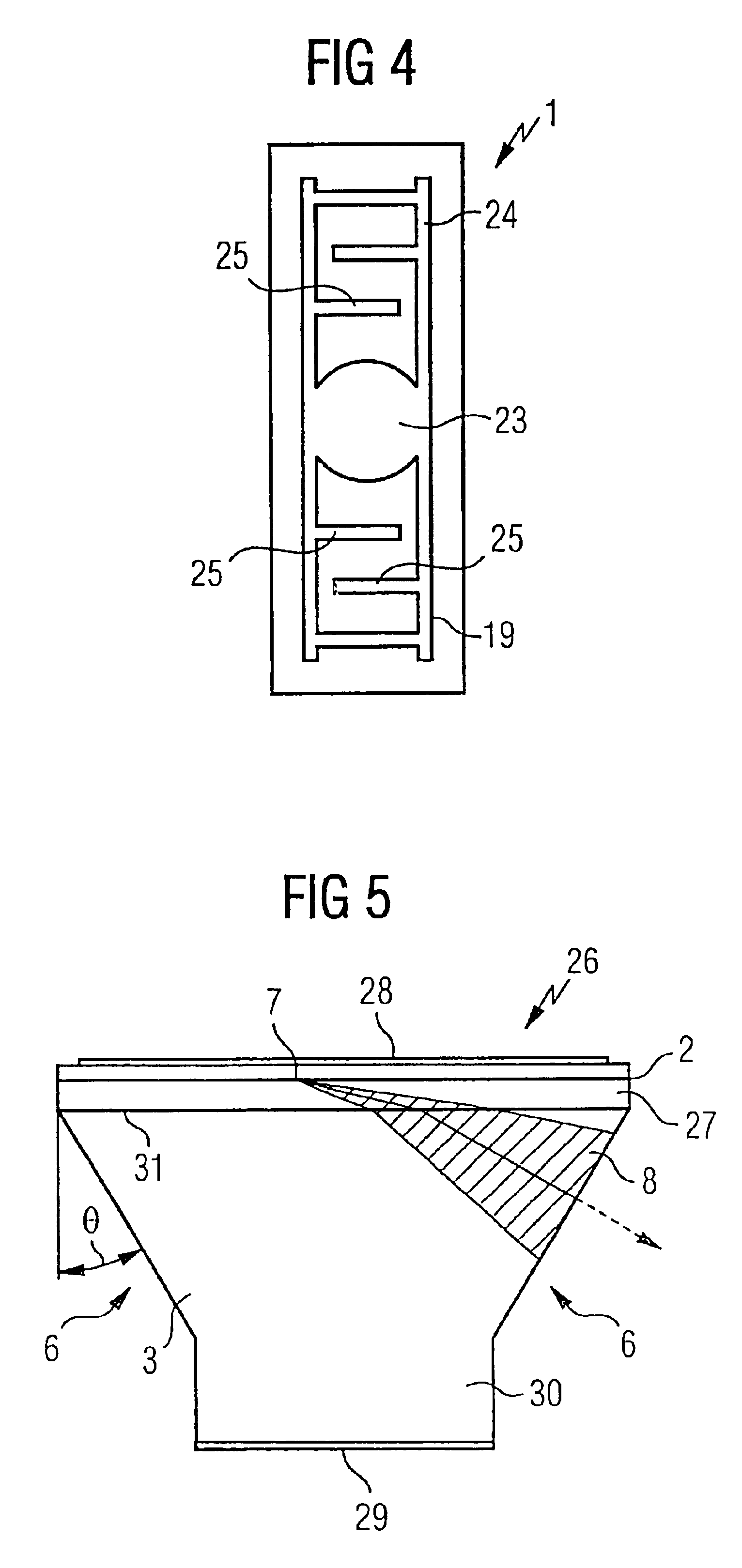Radiation-emitting semiconductor chip and light-emitting diode
- Summary
- Abstract
- Description
- Claims
- Application Information
AI Technical Summary
Benefits of technology
Problems solved by technology
Method used
Image
Examples
example 2
[0045]In the case of the semiconductor chip 26 with inclined sides illustrated in FIG. 5, the following values, presented in Table 2, were found for the various types. The percentage of extracted radiation has been referred to the total extraction obtained with the standard chip, as stated in Table 1.
[0046]
TABLE 2Cross-SectionalLateralTypeArea × HeightCurrentFrontsurfacesTotalStandard chip = 250 × 50 mA50%150%200%reference250 μm2 ×250 μmLarge chip750 ×450 mA450%400%850%750 μm2 ×250 μmRectangular chip250 ×450 mA450%1100%1550%2250 μm2 ×250 μm
[0047]Compared to the large chip of equal area, semiconductor chip 26 of FIG. 5 shows an improvement factor of 1.8, while in the case of semiconductor chip 1 of FIGS. 1a and 1b the gain is roughly 15%. Thus, lengthening the longitudinal sides 6 relative to the transverse sides 9 produces a marked increase in light output.
[0048]It should be noted that the considerations presented herein also apply to a semiconductor chip in which the active layer h...
PUM
 Login to View More
Login to View More Abstract
Description
Claims
Application Information
 Login to View More
Login to View More - R&D
- Intellectual Property
- Life Sciences
- Materials
- Tech Scout
- Unparalleled Data Quality
- Higher Quality Content
- 60% Fewer Hallucinations
Browse by: Latest US Patents, China's latest patents, Technical Efficacy Thesaurus, Application Domain, Technology Topic, Popular Technical Reports.
© 2025 PatSnap. All rights reserved.Legal|Privacy policy|Modern Slavery Act Transparency Statement|Sitemap|About US| Contact US: help@patsnap.com



